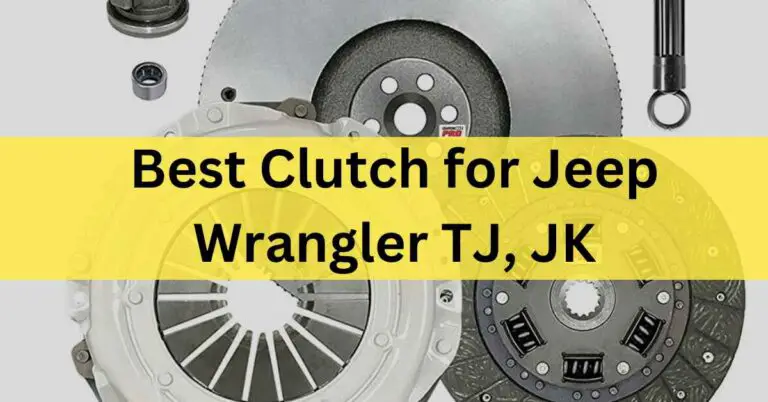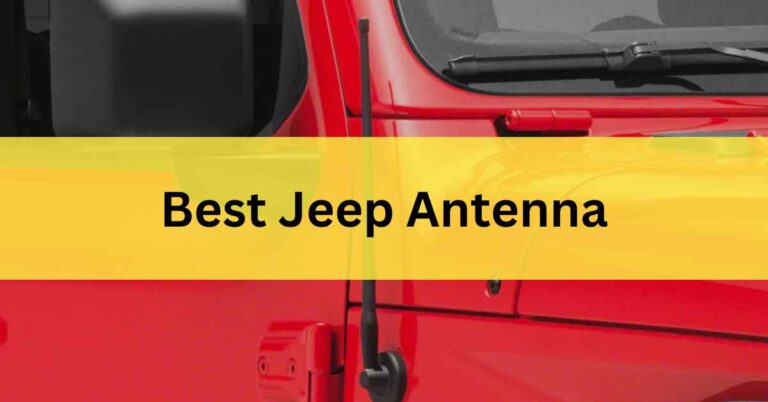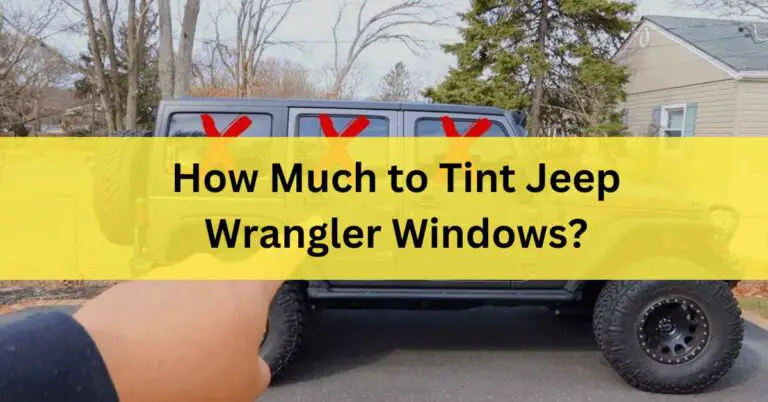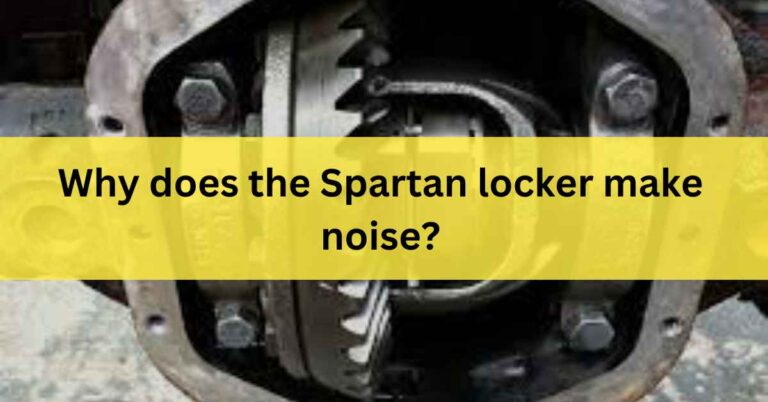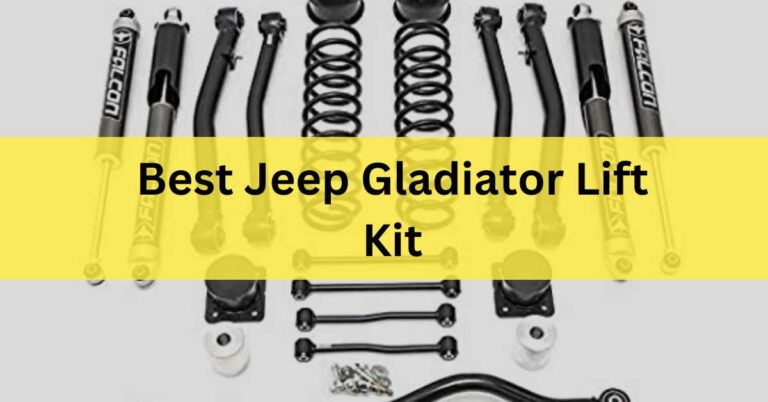How to Maintain Jeep Wrangler Tire Pressure? Checked In 2023
A critical aspect of keeping your Jeep Wrangler in top condition is maintaining proper tire pressure. Correct tire pressure affects your vehicle’s performance and ensures safety, fuel efficiency, and the longevity of your tires.
To maintain Jeep Wrangler tire pressure, regularly check it with a reliable gauge when tires are cold. Inflate or deflate as needed according to recommended levels. Monitor pressure during temperature changes and off-road trips. Utilize the TPMS if available, and visually inspect tires for damage.
In this article, we will delve into the importance of maintaining Jeep Wrangler tire pressure and provide a comprehensive guide on effectively doing it.
Table of Contents
The Significance of Proper Tire Pressure:
Maintaining the correct tire pressure in your Jeep Wrangler is essential for several reasons:
1. Safety:
Safety is one of the primary reasons for maintaining proper tire pressure. Adequate tire pressure ensures optimal traction and stability on the road, whether driving on highways or tackling off-road terrain.

Underinflated tires can lead to reduced control, longer braking distances, and an increased risk of accidents, particularly during sudden manoeuvres or adverse conditions.
2. Fuel Efficiency:
Correct tire pressure plays an important role in fuel efficiency. Overinflated tires reduce the road’s contact area, leading to uneven wear and decreased traction.
Conversely, underinflated tires increase rolling resistance, requiring more energy to move the vehicle forward.
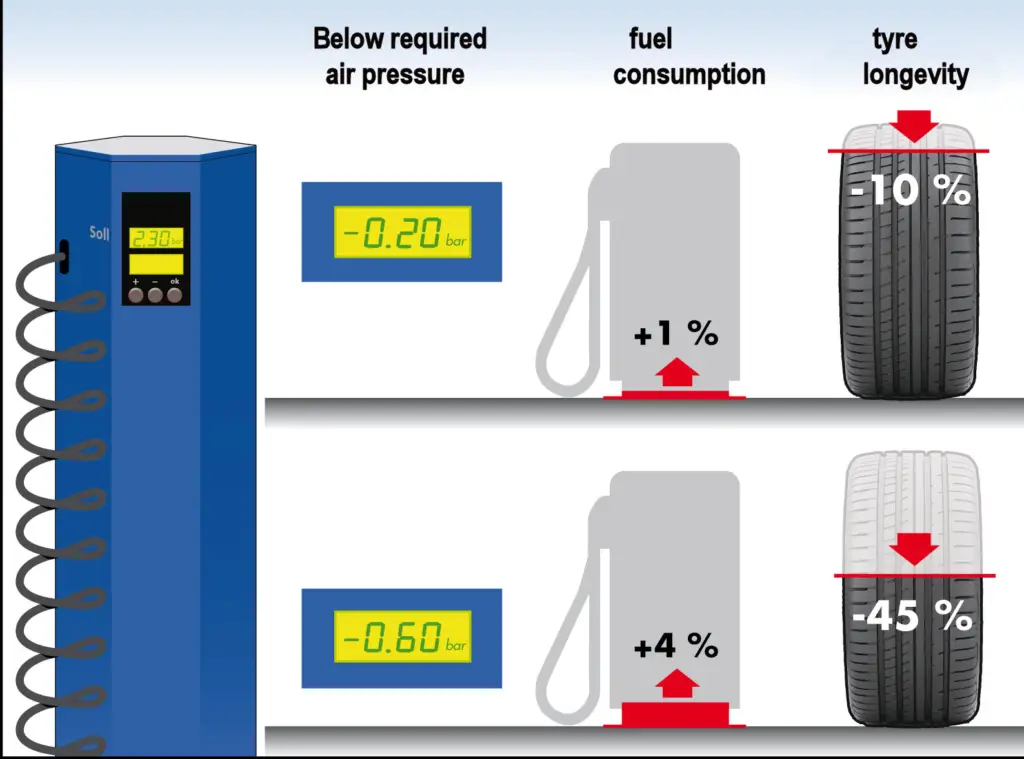
By maintaining the recommended tire pressure, you can improve fuel efficiency and reduce the frequency of refueling.
3. Tire Longevity:
Proper tire pressure promotes even wear across the tire tread. Underinflated tires wear out more quickly along the edges, while overinflated tires wear out more in the center.
Balanced pressure distribution ensures the tires last longer, saving you money on replacements.
4. Handling and Performance:
Maintaining the correct tire pressure is necessary for achieving optimal handling and performance.
Whether you’re navigating rocky trails or city streets, correctly inflated tires provide better stability, responsiveness, and control, enhancing your driving experience.
5. Ride Comfort:
Balanced tire pressure contributes to a smoother and more comfortable ride.
Properly inflated tires absorb shocks and vibrations from the road, ensuring you and your passengers enjoy a less jarring experience, especially during off-road adventures.
6. Environmental Impact:
Maintaining proper tire pressure also has environmental benefits. Improved fuel efficiency reduces carbon emissions, contributing to a greener driving experience.
By reducing the frequency of tire replacements due to uneven wear, you also indirectly reduce the environmental impact of tire production and disposal.
Steps to Maintain Jeep Wrangler Tire Pressure:
Here are the essential steps to effectively maintain the tire pressure of your Jeep Wrangler:
1. Regular Tire Pressure Checks:
Make it a habit to check your tire pressure regularly, ideally once a month. Use a good tire pressure gauge when the tires are cold, as hot tires can provide inaccurate readings due to increased air pressure.
Your Jeep Wrangler’s recommended tire pressure can be found in the owner’s manual or on the placard on the driver’s door jamb.
2. Use a Reliable Tire Pressure Gauge:
Invest in a reliable and accurate tire pressure gauge. Digital gauges are often more precise than analogue ones and are easy to use. Keep the gauge in your Jeep or garage to ensure it’s readily available when needed.
3. Inflate or Deflate as Necessary:
If the tire pressure is lower than recommended, you’ll need to inflate the tires. Use an air compressor with a gauge to add air until the pressure matches the recommended level.
On the other hand, if the pressure is too high, carefully release air using the gauge until it’s at the desired level. Overinflating or underinflating tires can lead to uneven wear and affect your Jeep’s performance.
4. Monitor Pressure During Temperature Changes:
Tire pressure changes with temperature fluctuations. As the air inside the tire heats up, the pressure increases, and vice versa.
The pressure might drop if you travel from a warmer area to a cooler one. Monitor the pressure and adjust it as needed to maintain the optimal level.
5. Off-Roading Considerations:
When heading for off-road adventures, consider lowering your tire pressure slightly. It can enhance traction and stability on rough terrain.
However, make sure to reinflate the tires to the recommended pressure once you’re back on regular roads, as low tire pressure can affect handling and fuel efficiency.
6. Utilize the TPMS:
Modern Jeep Wranglers often come equipped with a Tire Pressure Monitoring System (TPMS), which provides real-time readings of your tire pressure. If your Jeep has a TPMS, heed its alerts and warnings. It will notify you when the tire pressure is too low or too high, making it easier to maintain proper pressure levels.
7. Load and Inflation Balancing:
If you’re carrying heavy loads or towing, refer to your vehicle’s manual for recommended adjustments to tire pressure.
Heavy loads can impact tire wear and handling. Balancing the load and inflation ensures safe and optimal performance.
8. Visual Tire Inspection:
Regularly inspect your tires visually. Look for signs of damage, uneven wear, or foreign objects that could cause leaks. Address any issues promptly to prevent potential tire failure.
9. Rotate Tires Periodically:
Tire rotation is essential for even tire wear. Follow your Jeep Wrangler’s recommended rotation pattern and schedule as the owner’s manual outlines. This practice extends the life of your tires and ensures consistent performance.
Frequently Asked Questions:
1. Can I adjust tire pressure for off-road driving?
Yes, adjusting tire pressure for off-road driving can improve traction and comfort. Lowering the tire pressure slightly increases the tire’s contact area with the terrain, enhancing stability.
2. What are the risks of driving with underinflated or overinflated tires?
Underinflated tires can lead to reduced control, longer braking distances, and uneven tire wear. Overinflated tires might cause reduced traction, a harsh ride, and increased vulnerability to road hazards.
3. Can improper tire pressure affect fuel efficiency?
Yes, incorrect tire pressure can impact fuel efficiency. Underinflated tires increase rolling resistance, requiring more energy to move the vehicle. Overinflated tires might lead to uneven wear and reduced traction.
4. How does proper tire pressure contribute to tire longevity?
Properly inflated tires promote even tread wear. Underinflated tires wear out the edges faster, while overinflated tires wear out the centre. Balanced pressure distribution extends the lifespan of your tires.
5. Can I visually inspect my tires for signs of damage?
Yes, regular visual inspections of your tires are essential. Look for cuts, punctures, bulges, or uneven wear patterns. Address any issues promptly to prevent potential tire failure.
Conclusion:
Maintaining the proper tire pressure of your Jeep Wrangler is a fundamental aspect of vehicle upkeep.
Regular checks, reasonable inflation, and attention to temperature changes and driving conditions all contribute to a safe and efficient driving experience.
By following these steps, you can ensure that your Jeep’s tires are in optimal condition, enhancing your vehicle’s performance, longevity, and overall driving satisfaction.

